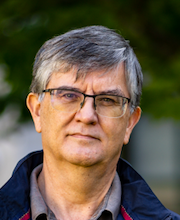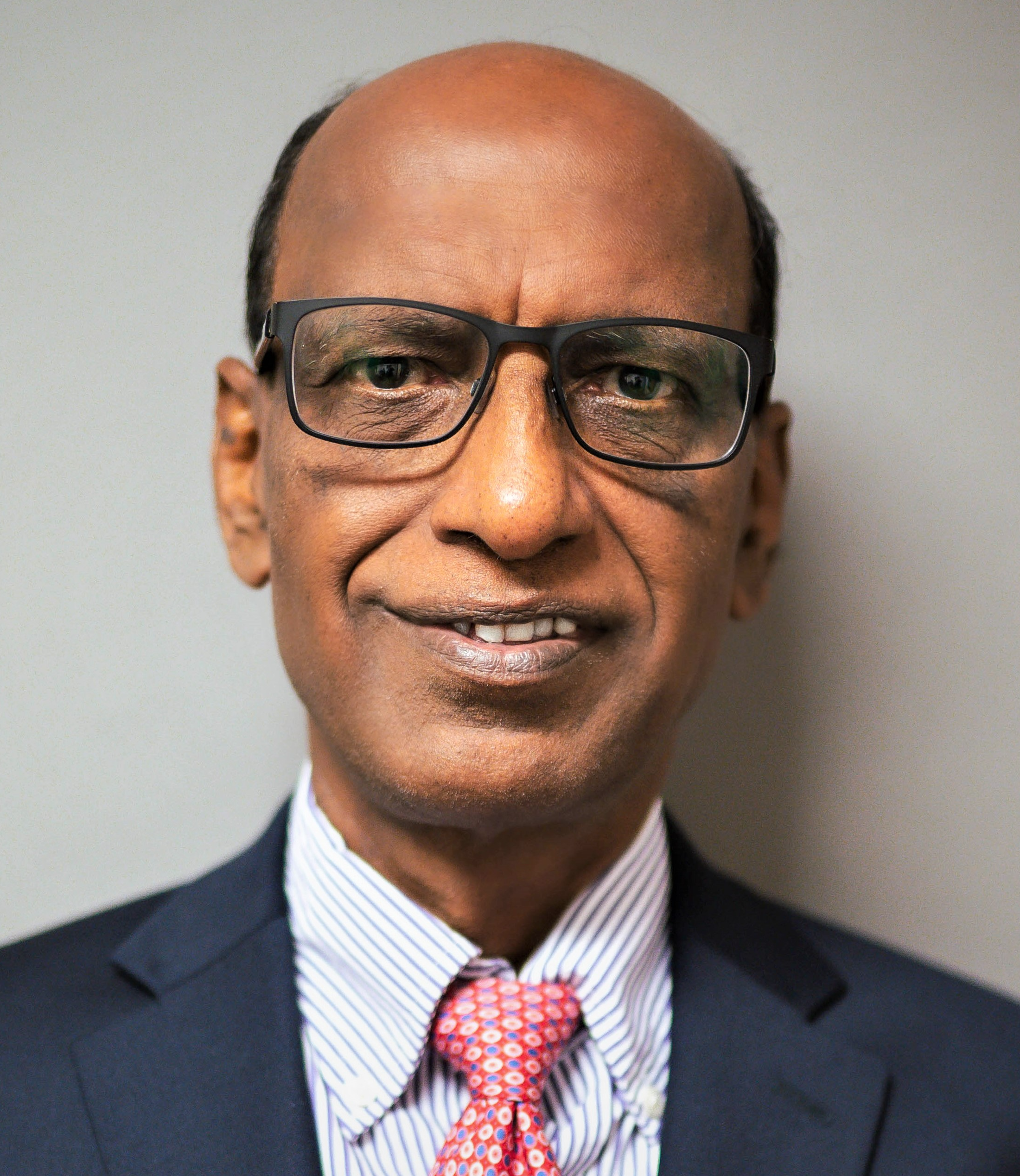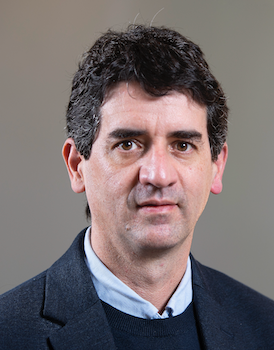Plenary Lectures
|
|
|
Plenary Lecture: |
|
Abstract:
Porous materials are usually thought of as amorphous mixtures of two or more things, solids, fluids, and voids. The research field started that way, and so did my own activity in it. Along the way, I was drawn to the part of nature (the physics) that was missing from the amorphous view: the structure, flow, configuration, drawing (design), purpose, and evolution. The lecture is pictorial. It begins with defining the terms, because words have meaning: vascular, design, evolution, and prediction (theory). Next, the lecture shows that vascular (tree shaped) architectures flow more easily than parallel channels with only one length scale (the wall to wall spacing). Transport across channels is facilitated when the spacing is such that the channel flow length matches the entrance (developing) length of the flow. The tendency to evolve with freedom toward flow configurations that provide greater access is universal in nature, bio, and non-bio. This tendency is the Constructal Law, which empowers us to predict the evolution toward flow access, miniaturization, high density of heat transfer, and the scaling up (or down) of an existing design. Multiscale vasculatures occur naturally because they flow more easily than their counterparts with a few length scales. The future of evolutionary design everywhere points toward vascular, hierarchical flow architectures that will continue to morph with freedom and directionality.
|
|
|
|
Plenary Lecture: |
|
Abstract:
This talk will sketch the main issues raised by, and responses to, the mind-body problem in Philosophy of Mind. This is the philosophical background for framing some philosophical issues of Artificial Intelligence (AI). The talk will address the issue of what is AI. It will explore some philosophical approaches to AI (AI pursued as and out of philosophy). The main argument of the talk is that philosophy of AI is capable of improving the conceptual and logical underpinnings of the huge engineering projects and challenges that AI is currently raising and also baffling us.
|
|
|
|
Plenary Lecture: |
|
Abstract:
The offshore extraction of oil and gas is an energy-intensive process that releases CO2 and methane into the atmosphere. To extract the subsea oil and gas, several electrical systems are deployed. Many subsea electrical systems need a high-reliability power grid and power control units on the seabed. To reduce the emissions from offshore energy production, it is important to supply the subsea electrical loads using renewable energy sources. The offshore industry has become more significant in recent years because several offshore wind farms led to a global installed offshore wind capacity of 54.9 GW by the end of June 2022. One of the applications for offshore wind could be to power the electrical systems located on the seabed that is required for oil and gas extraction instead of from the gas turbine or diesel engine generators located on the platform. But there are many challenges for deploying the electrical systems and the power converters on the seabed and supplying renewable electrical power either from offshore wind or onshore. This seminar presents the requirements and challenges of operating in the subsea environment, current trends, and the use of power electronics for efficient power transmission from offshore platforms or onshore to the subsea electrical loads. The presentation also addresses how renewable sources such as offshore wind can be used for powering the subsea electrical loads and other offshore applications such as the production of Hydrogen, shore power, and for powering ocean vessels.
|
|
|
|
Plenary Lecture: |
|
Abstract:
Global efforts toward decarbonization have highlighted the importance of addressing emissions in the transportation sector. For ground transportation, this has triggered an imminent transition towards multiple variants of electric vehicles. This talk will focus on air transportation. We will present the IZEA concept - an ongoing effort towards zero emission aviation - which relies on hydrogen as an alternative fuel for turbines and fuel cells. The talk will cover an overview of the proposed power train with emphasis on thermal management of its components (motors, power electronics, HTS cables, among others). The talk will conclude with a summary of ongoing efforts aiming to increase the overall aircraft cooling capacity and illustrating how that increased capacity can enable NOx reduction by supporting an expanded use of direct electrochemical conversion in fuel cells over combustion in hydrogen turbines.
|
|
|
|
Plenary Lecture: |
|
Abstract:
Electric propulsion is widely seen one of the main solutions to improve energy efficiency and reduce CO2 emissions in transportation. Whether hybrid or full electric future propulsion systems will undoubtedly require power electronic driven electrical machines. Industry-led technology road maps across automotive, aerospace, heavy goods transport etc. sectors recognise the importance of electrification and have set demanding targets on future electrical machine power to weight, efficiency and cost, alongside considerations of security of material supply chain and local manufacturing capabilities. There is a strong interest to reduce the volume and cost of active materials in propulsion motor technologies beyond their current state-of-art. Potential solutions include increased motor speeds and higher pole numbers and/or typologies such as reluctance and induction machines reduced dependence on rare-earth materials. In high performance, weight critical applications such as aircraft the limitations of conventional electrical machine construction, comprising laminated iron and organic polymer insulated magnet wire coils, is becoming a major barrier to future performance improvement. As there can be significantly different usage and performance requirements across e- mobility applications adopting a common standard of motor design is unlikely to yield the optimum in terms of overall system energy efficiency and performance. These considerations will be discussed and compared.
|
|
|
|
Plenary Lecture: |
|
Abstract:
The development of charge-based or charge-controlled devices needs a perfect knowledge of the amount and of the distribution of the electric charge in the different material layers and at their interfaces. This need is particularly acute when high electric fields establish in the structures during operation, as in electrets, MEMS, devices for controlling micro-fluids in lab-on-a-chip, high-voltage high-current integrated devices, micro-electro-thermal heat sinks for micro components etc.
On the other hand, electrical charge accumulation in dielectrics (or space charge, as it is commonly referred to) can have dramatic effects when uncontrolled. Thus, the electric field induced by the development of space charges is superimposed to the geometrical electric field applied to the material in its usual operating conditions. The resulting value of the field can approach and even exceed the breakdown threshold, leading to an alteration or to the destruction of the material and, as a consequence, to a possible failure of the system in which it is included. The risk is increased when high electric fields are applied to the component, at the interface between different materials, or in the presence of external factors able to induce significant amount of charges in the insulating layers (e.g. radiations). Even without reaching breakdown, the charges accumulated in the insulating layers of a device may provoke malfunction affecting system reliability. This is a critical problem in contexts with considerable economical dimensions and where human security considerations are essential, such as in electrical power transport, airborne and space applications. This talk aims at giving an insight into the field of non-destructive methods for localizing and quantifying electric charges and field distribution in dielectrics. The fundamentals of the influence (or "stimuli") methods used for measuring space charge and polarization distributions in solid insulating structures are first presented. The possibilities offered today by these methods and their fallouts in the domains of dielectric materials, electrical engineering and electronics structures are then put into evidence using various supporting examples. Experimental set-ups and results obtained in recent years are reviewed, and perspectives of evolution of these methods are discussed. Challenges and expected achievements in the near future are brought into focus.
|





